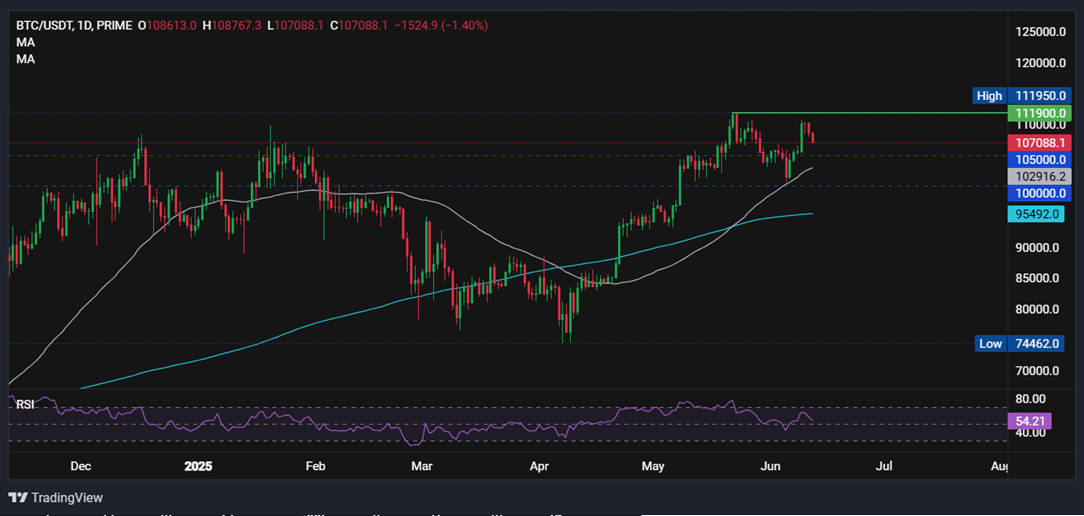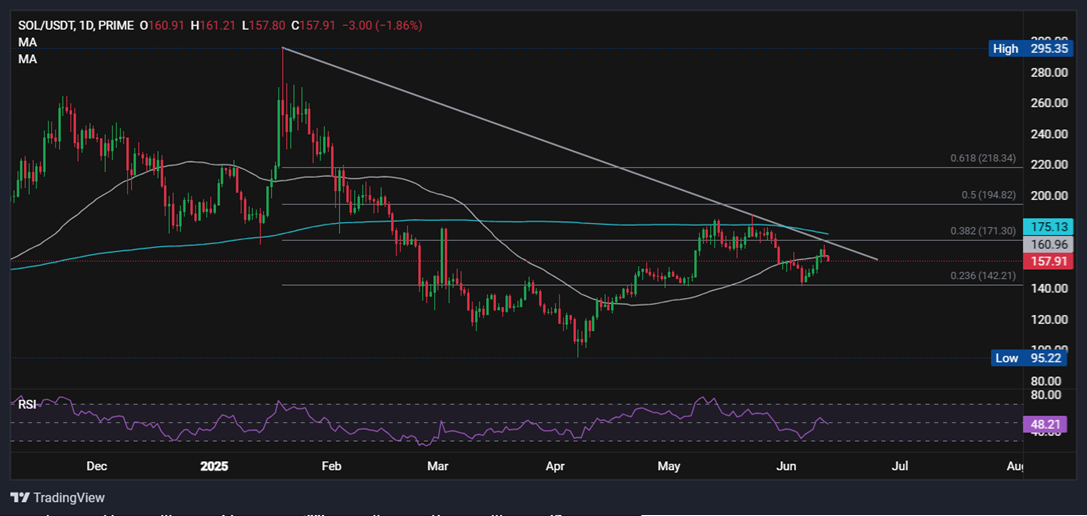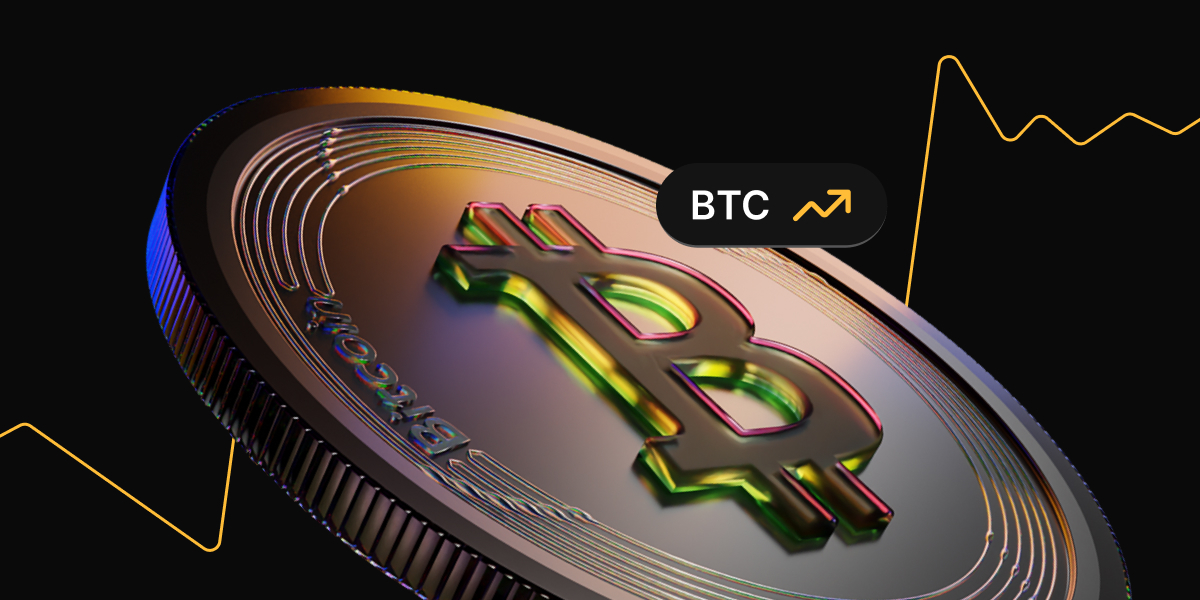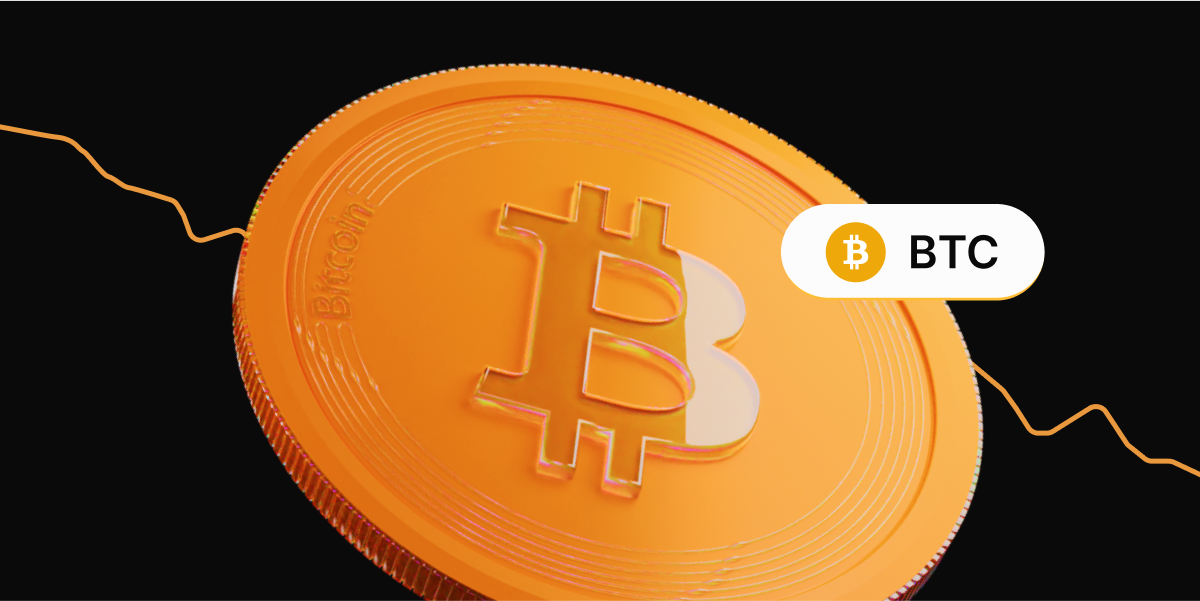After rising to 110.5k last week, Bitcoin is falling for a third straight session, dropping to 107k. The world’s largest cryptocurrency was pulled lower amid broader market weakness.

The selloff was triggered by pressure on risk assets amid renewed tensions in the Middle East, although this is expected to be short-lived. News of the US-China trade deal and weaker-than-expected US inflation data should offer some support.
The regulatory outlook is positive, as the US Senate took a step in advancing the Genius bill on Wednesday. By a vote of 68 to 30, US senators pushed the stablecoin legislation further up the approval ladder, allowing it to proceed to a final floor vote, which is expected to take place early next week.
The Genius Acts is a bipartisan stablecoin bill that requires issuers to back tokens 1 :1 with the US dollar or short-term treasuries. It also focuses on establishing anti-money laundering and customer protection frameworks for stablecoin payments.
This bill comes as the stablecoin market has continued to grow, rising to $250.52 billion after adding $1.42 billion to total capitalization over the past week, according to Defi Llama data. An increase in the stablecoin market often translates to increased prices across cryptocurrencies, indicating freshly available liquidity to spur demand.
Increased attention on stablecoins comes following the stablecoin issuer Circles’ successful debut on the New York Stock Exchange. Circle jumped 168% and raised almost $1.1 billion in its initial public offering last week. After an IPO price of $31.00, the stock opened at $69 and is trading at $117 today.
Solana ETF optimism drive 6% gains this week
Solana is tracking Bitcoin lower, falling for a second straight day, but it is still on track to book gains of almost 6% across the week.
The price remains supported by optimism that the US Securities and Exchange Commission could approve spot Solana exchange-traded funds within the next few months.
The SEC has reportedly requested prospective Solana ETF issuers to submit amended S1 registration statements by next week. This could allow the agency to provide comments on the updated filings within 30 days, moving the process forward.
According to Bloomberg intelligence analyst James Seyffart, approval could come as early as July. However, final deadlines based on a 240-day review period could mean that final approval doesn’t come until October. He puts the odds of SOL ETF approval at 90%.
Several major firms are in a race to launch, including Grayscale VanEck 21 Shares, Canary Capital, Bitwise, and Franklin Templeton.
The CME launched sole futures in February, the existence of which often paves the way towards ETF approval, as seen in BTC and ETH.
Where next for SOL?

While SOL has recovered from its 95.15 April low, it remains below its falling trendline and 200 SMA in a bearish chart. After facing rejection at the 200 SMA, SOL/USD found support at 142, the 23.6% Fib retracement. The price has recovered from this low but needs to rise above the 200 SMA at 176.00 for buyers to gain traction, while a rise above 185 creates a higher high and opens the door to 200.
Support can be seen at 160, the 50 SMA. Below here 142 comes into place and then creates a lower.
Trading involves risk.
The financial products offered by the Company are complex and come with a high risk of losing money rapidly due to leverage. These products may not be suitable for all investors. Before engaging, you should consider whether you understand how these leveraged products work and whether you can afford the high risk of losing your money.
The Company does not accept clients from the Restricted Jurisdictions as indicated in our website/ T&C. Some services or products may not be available in your jurisdiction.
The applicable legal entity and its respective products and services depend on the client’s country of residence and the entity with which the client has established a contractual relationship during registration.




